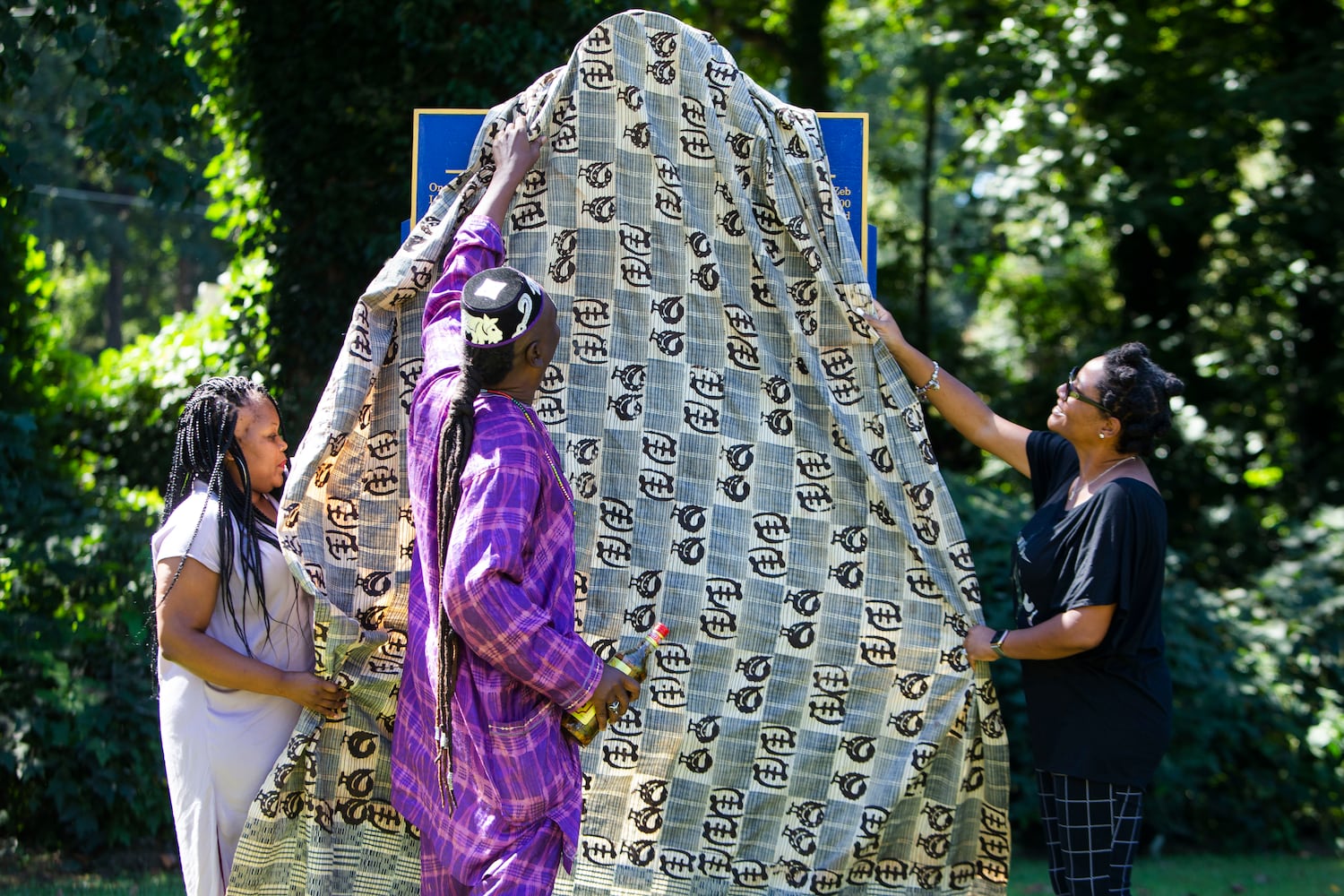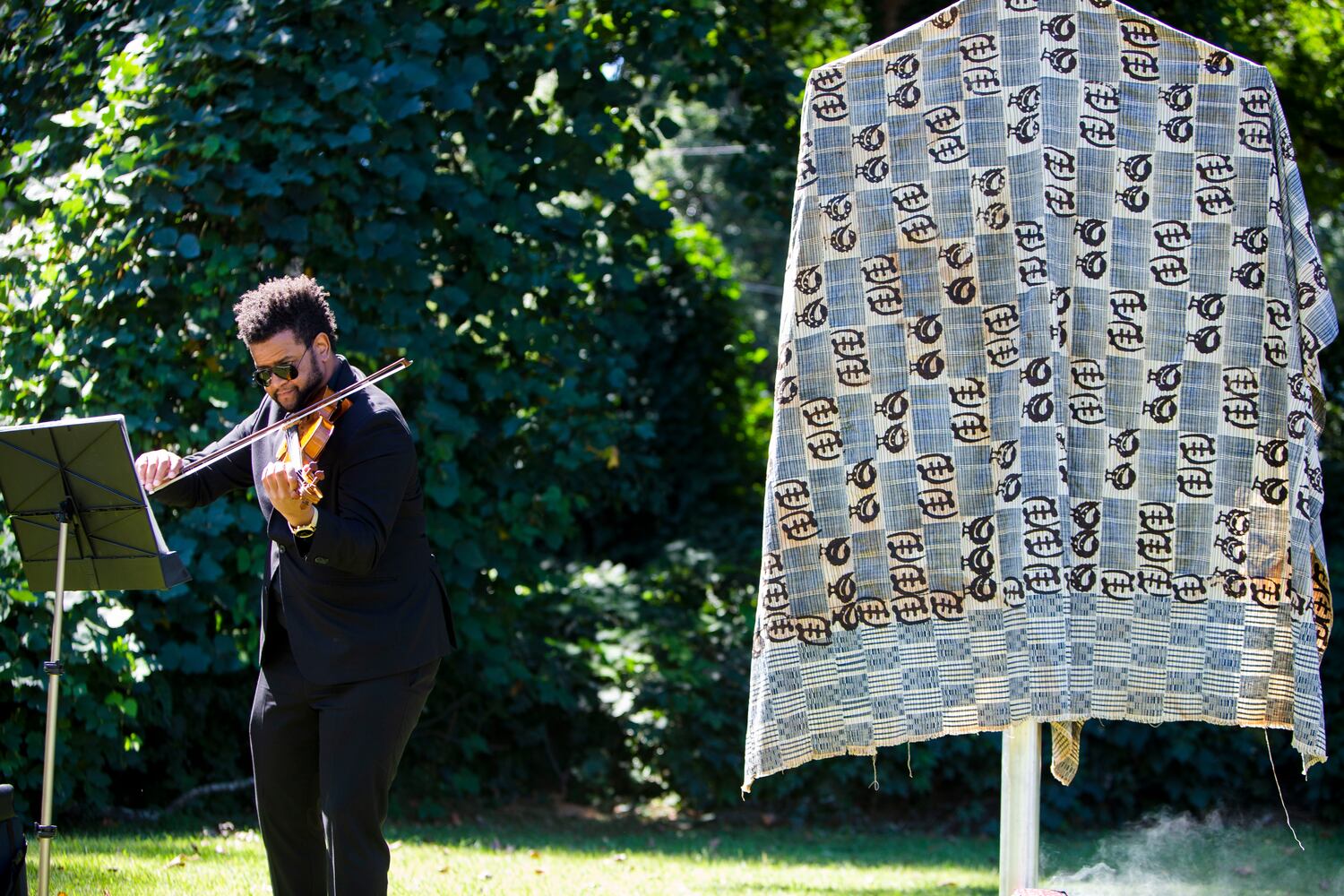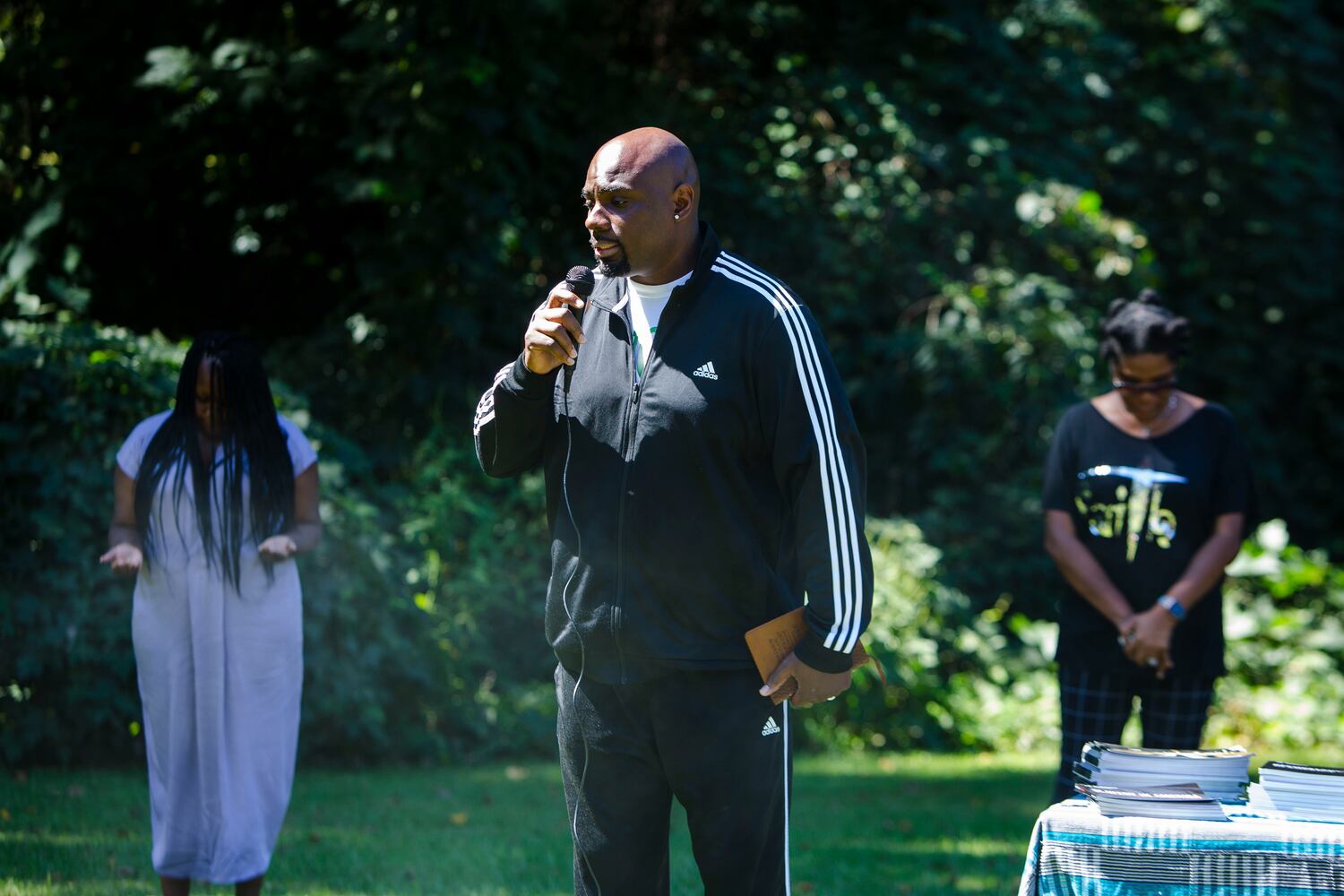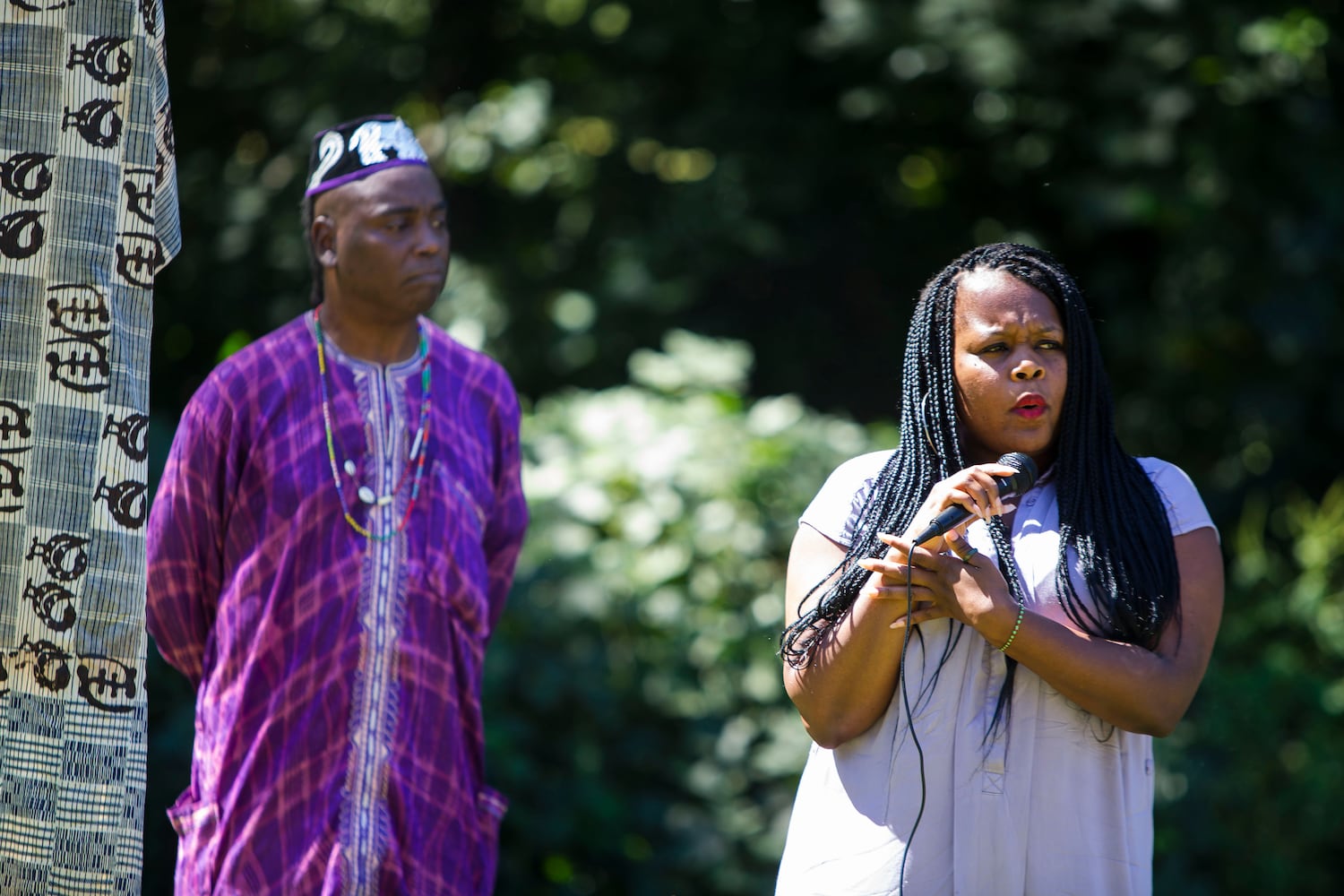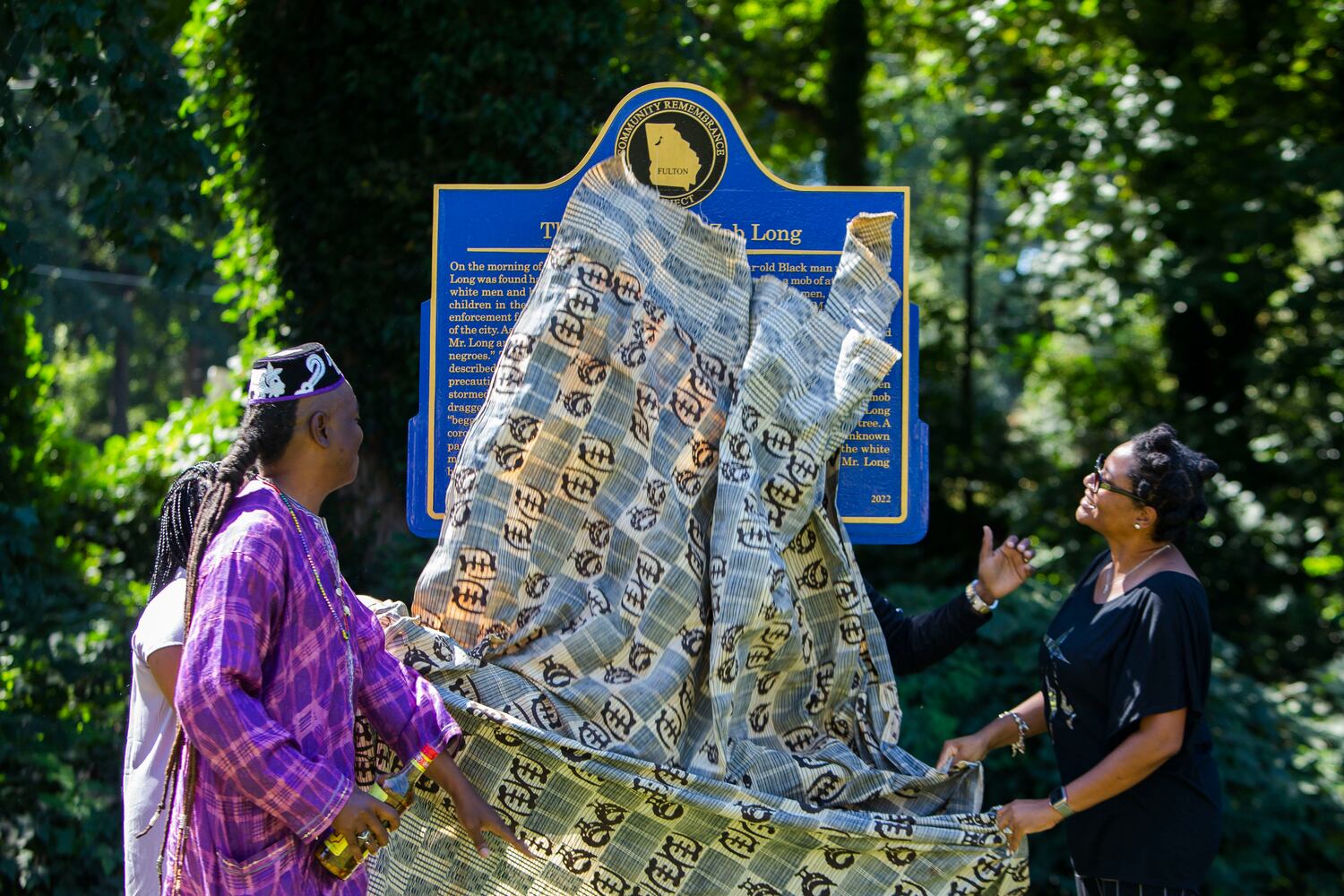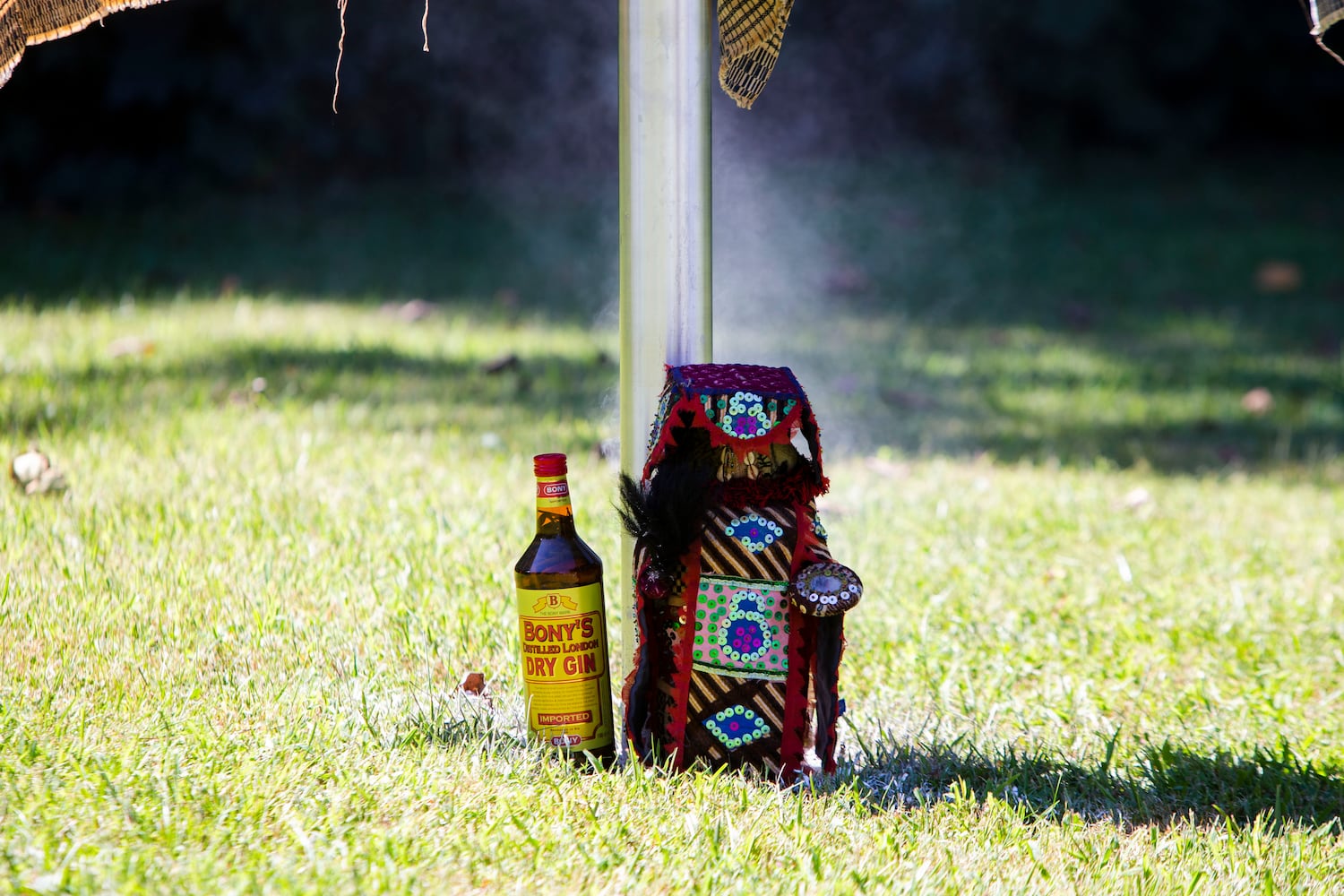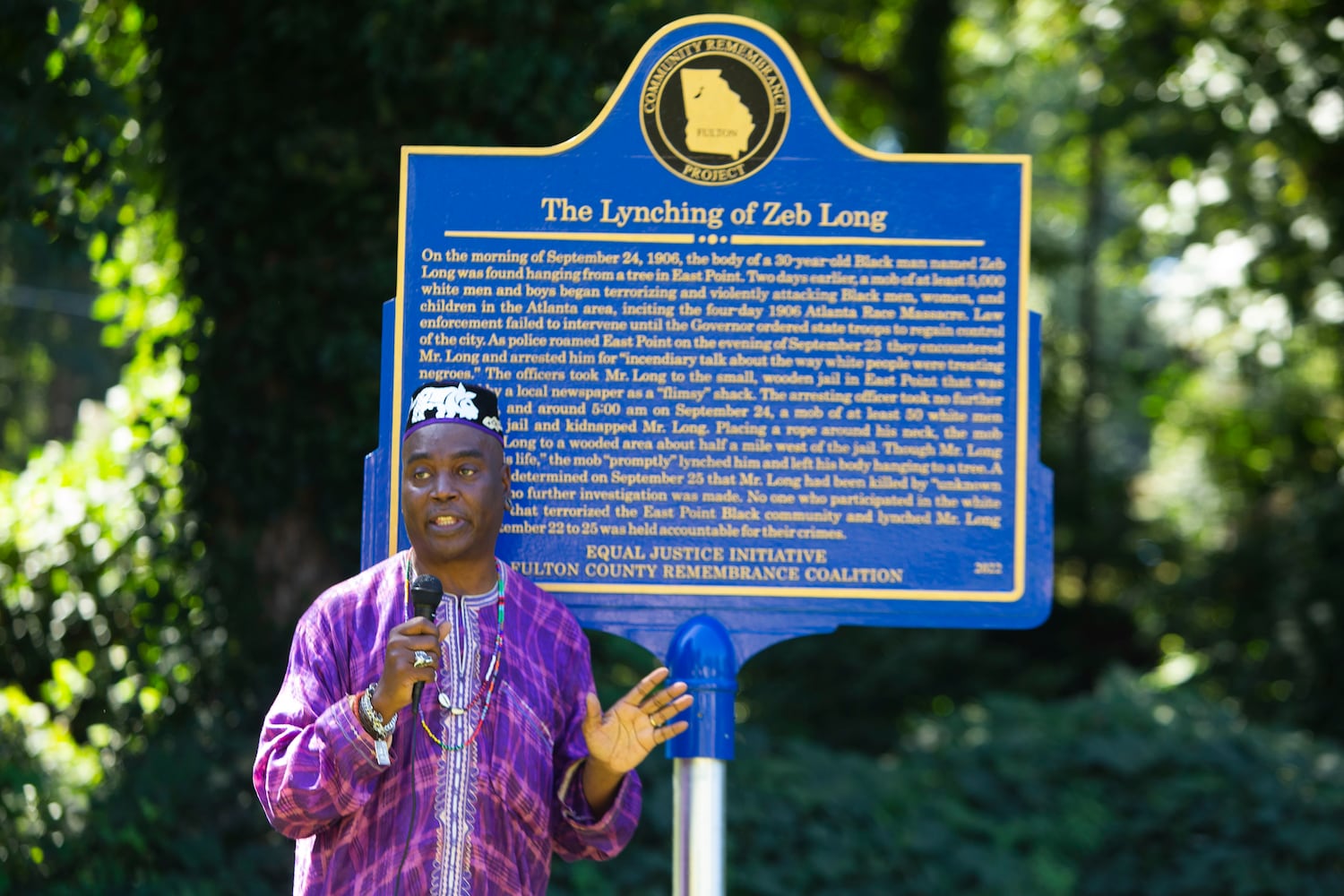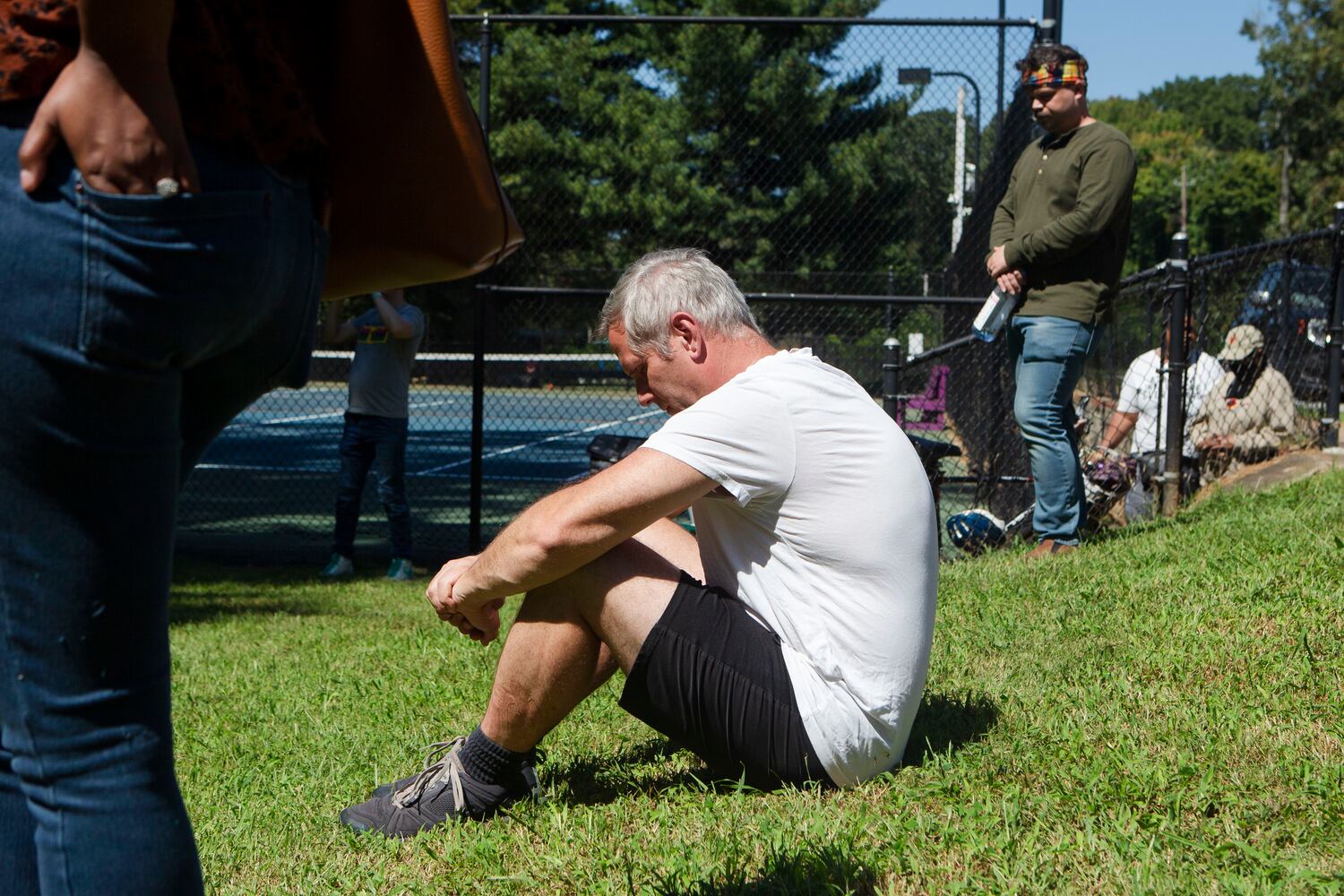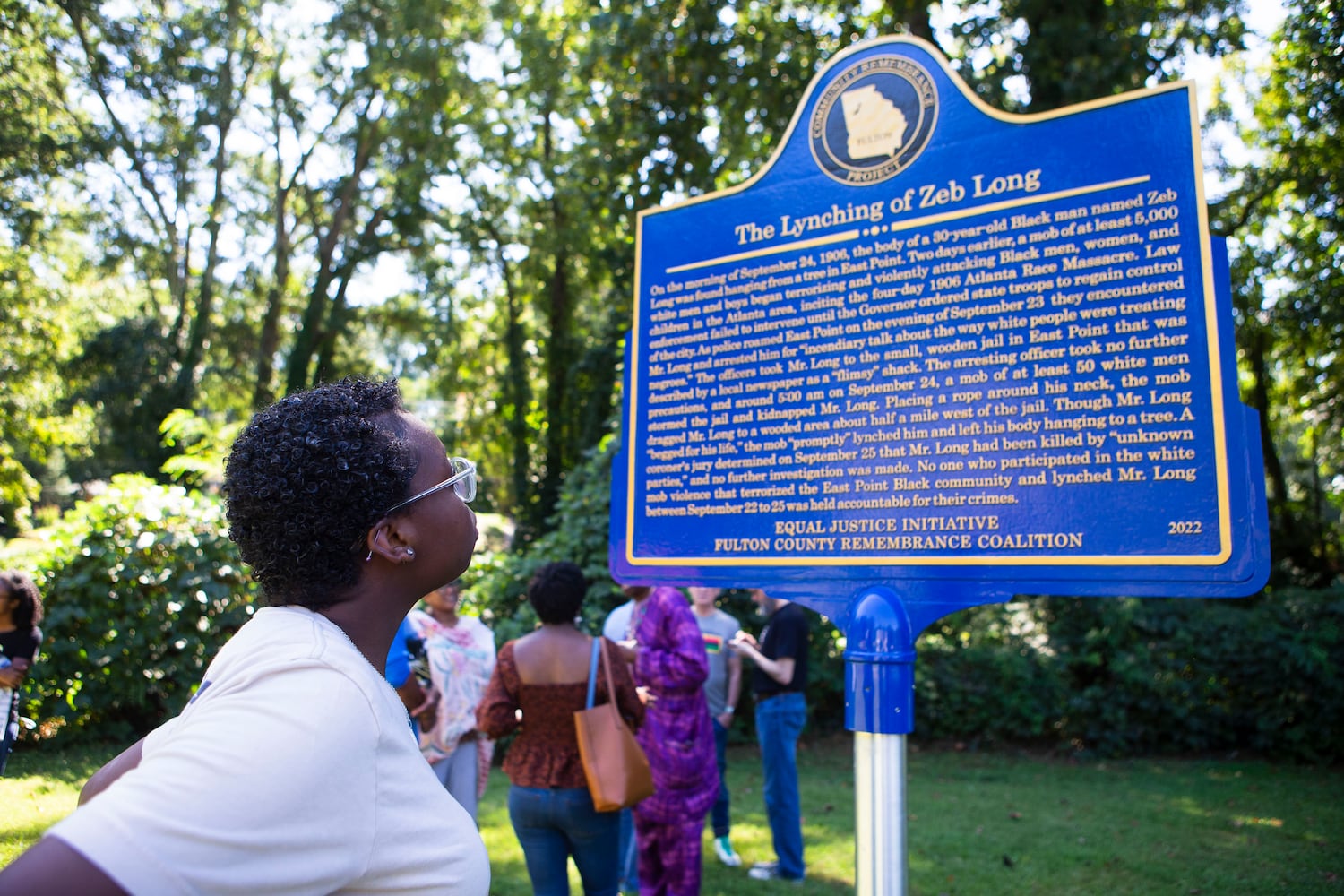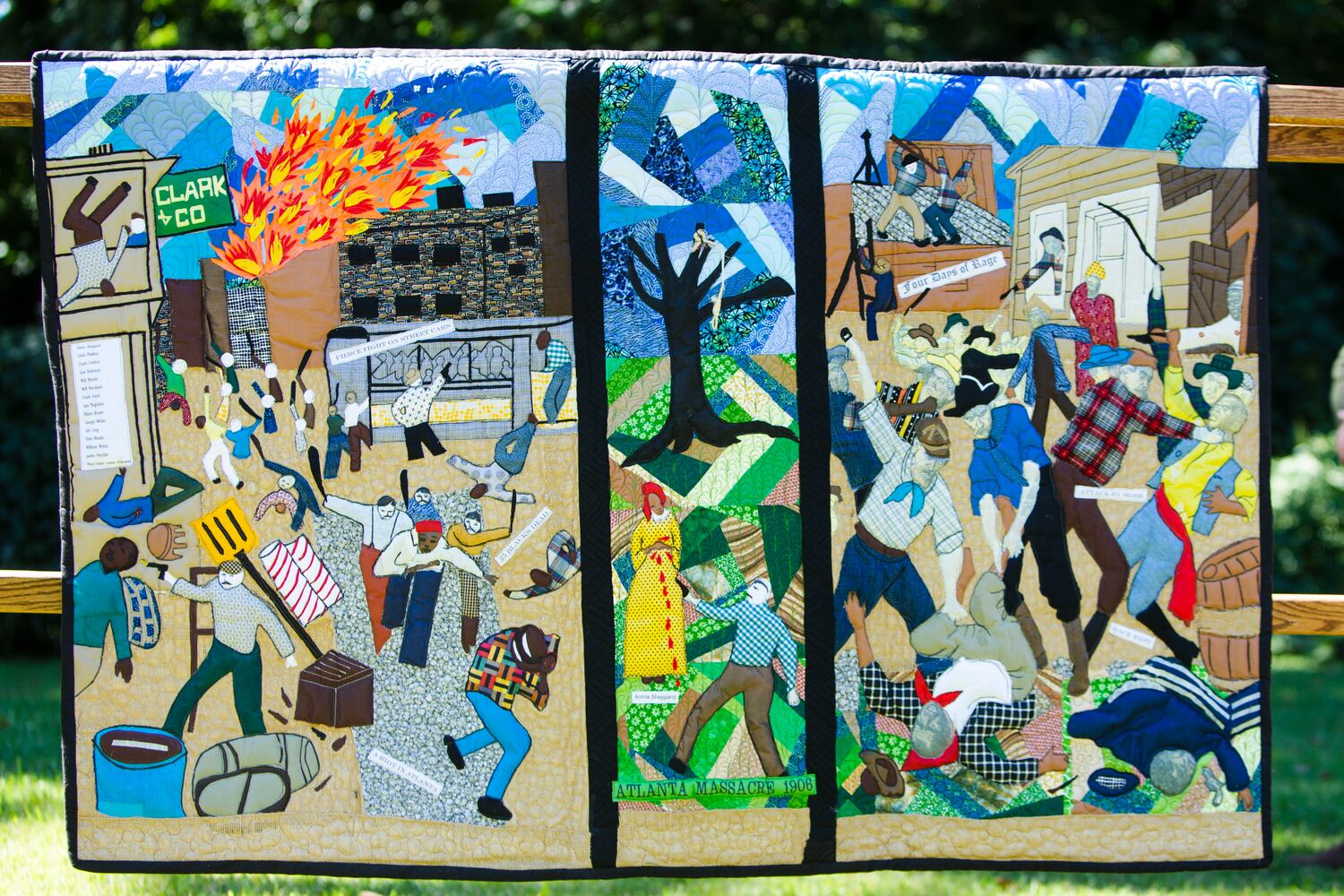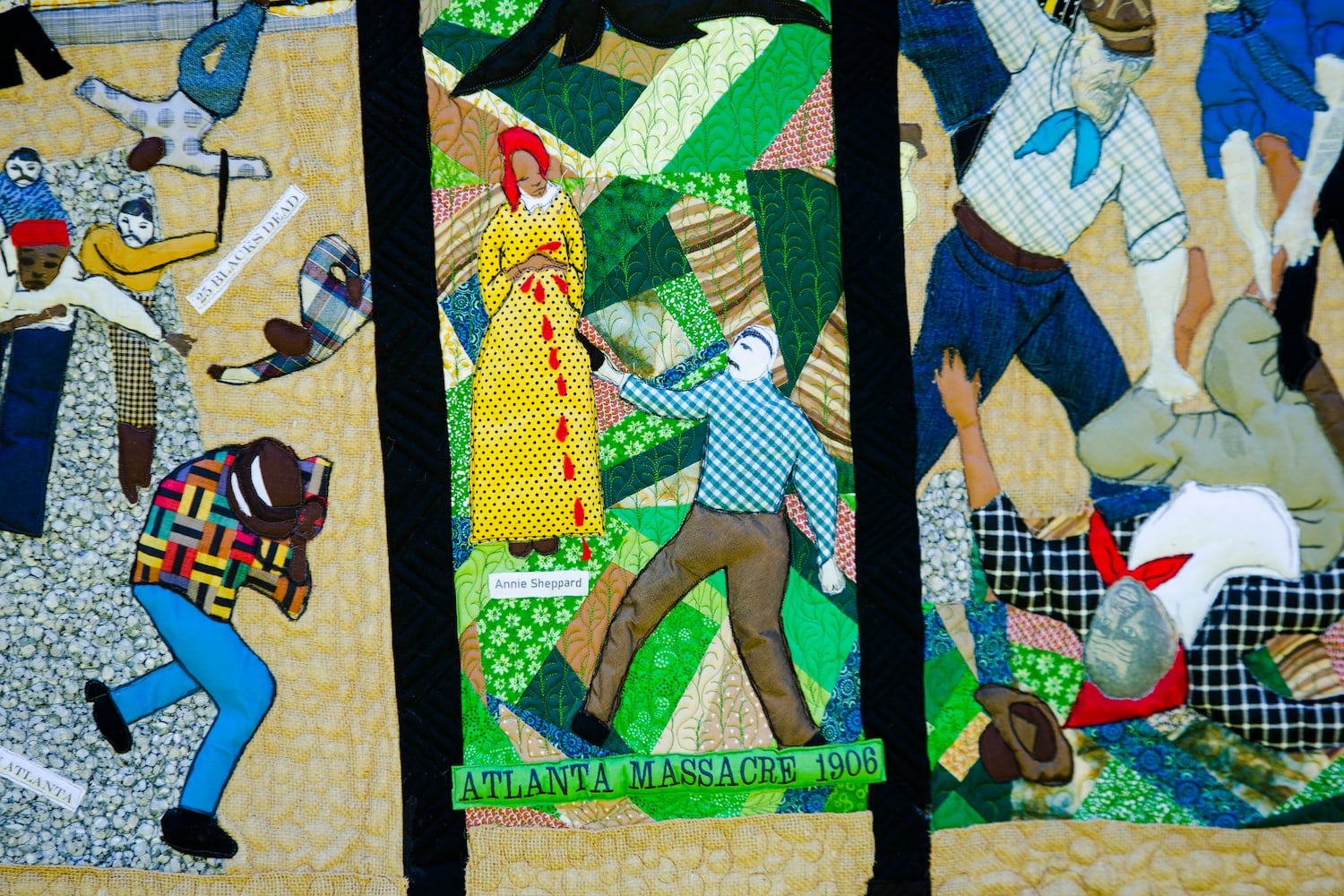On Saturday, dozens of people gathered at a spot in East Point to mark a tragic moment in metro Atlanta history.
On Sept. 23, 1906, a day after the Atlanta Race Massacre started in downtown Atlanta, Zeb Long found himself in the East Point jail.
It remains murky whether his arrest was in any way related to what was going on downtown, or if it just was par for the course, but Long — a 30-year-old “gigantic man,” weighing 200 pounds — was arrested, according to one news report at the time, for “incendiary talk about the way white people were treating Negroes.”
At 5 a.m. on Sept. 24, a mob of 50 white men broke into the jail, put a rope around his neck and dragged Long a half-mile into the woods.
Long begged for his life, but the mob hanged him from a tree.
In his book “Negrophobia: A Race Riot in Atlanta, 1906,” Mark Bauerlein wrote, that upon leaving the scene, members of the lynch mob, “glanced back to see the giant frame of the big, black Negro swinging and swinging as he strangled to death, kicking and gasping for breath as the rope tightened about his neck.”
No person was questioned, charged or arrested for Long’s death.
Ann Hill-Bond, co-chair of the Fulton County Remembrance Coalition, said that while terror was reigning in Atlanta, “The East Point mob realized that it was open season on African Americans and took part in it.”
Credit: Christina Matacotta
Credit: Christina Matacotta
On Saturday, 116 years after his lynching, 50 people — Black and white — gathered on the very spot of the lynching for the ceremonial unveiling of a historical marker in honor of Long sponsored by the FCRC and East Point’s Public Art Division for the project.
Just days after Long was killed, East Point city officials concluded that his lynching was justified. Now, the Black mayor of the town, Deana Holiday Ingraham, was honoring Long’s humanity.
“He was a man with a family. A human being who contributed,” Ingraham said. “His life was snuffed out for no other reason that the color of his skin. This tragic history should not be repeated, but it has to be remembered.”
The site of Long’s lynching is now Sumner Park, a tight little space nestled in the middle of an established neighborhood. The marker is located next to the tennis courts and not far from the Dick Lane Velodrome, a bicycle racing facility.
Credit: Christina Matacotta
Credit: Christina Matacotta
The burning of sage to cleanse the space permeated the whole area. On a table nearby sat a jar of soil from the site, which was collected in February by the Montgomery, Alabama, nonprofit Equal Justice Initiative. A quilt telling the story of the massacre hung next to the table.
The marker was draped in a cloth from Ghana with Adinkra symbols on it. One was the Sankofa symbol, which means “go back to the past and bring forward that which is useful.” The other was the Gye Nyame, symbolizing “God’s omnipotence.”
“Even when Zeb Long was being lynched,” said Christopher Swain, public art coordinator for East Point, “God was with him.”
Credit: Christina Matacotta
Credit: Christina Matacotta
Violinist Christopher Mosley, wearing a black suit, started the ceremony with a tearful rendition of Samuel Coleridge-Taylor’s “Ballade in A Minor.”
When Ingraham, Hill-Bond and Swain removed the cloth, the blue and gold marker shimmered in the sunlight. The crowd pulled out their cellphones and gathered around it to read the inscriptions. The front retells Long’s story. The back recounts the history of lynching.
“As an African American, history has not always been kind to us,” Hill-Bond said. “But markers like this and the language we use, show that history can be kind to us. Because we intend to write it.”
“People are trying to come to grips with this,” said Swain, about the crowd gathered Saturday. “They are trying to learn from this terrible part of our history.”
According to the Equal Justice Initiative, which tracks American lynchings, between 1877 and 1950, there were 589 Black people lynched in Georgia. Leading the state was Fulton County with 35.
Long was one of about two dozen Black people — and two whites — who lost their lives during the four-day massacre.
Credit: Christina Matacotta
Credit: Christina Matacotta
Along with the Zeb Long marker, on Saturday night, Hill-Bond unveiled a second marker in Brownsville, the south Atlanta neighborhood where the massacre spread from downtown. A third marker will be unveiled next week in downtown Atlanta.
Hill-Bond said although the markers are going up, the legacy of the massacre is still prevalent, particularly when you study the wealth, education and health disparities gaps faced by Black residents.
“It shows up today in micro-forms in how we interact with each other,” Hill-Bond said.
At the close of the East Point ceremony, Jadori Smith, a 17-year-old high school senior on her way to Southern University to study social justice, stared at the marker and called its unveiling “bittersweet.”
“It is sad that we have to remember such a dark point in our history,” Smith said. “But it is good, because my generation would have forgotten about this. We need to know this history. But how many Zeb Longs are out there that we don’t know about?”
Credit: Christina Matacotta
Credit: Christina Matacotta
About the Author
The Latest
Featured
